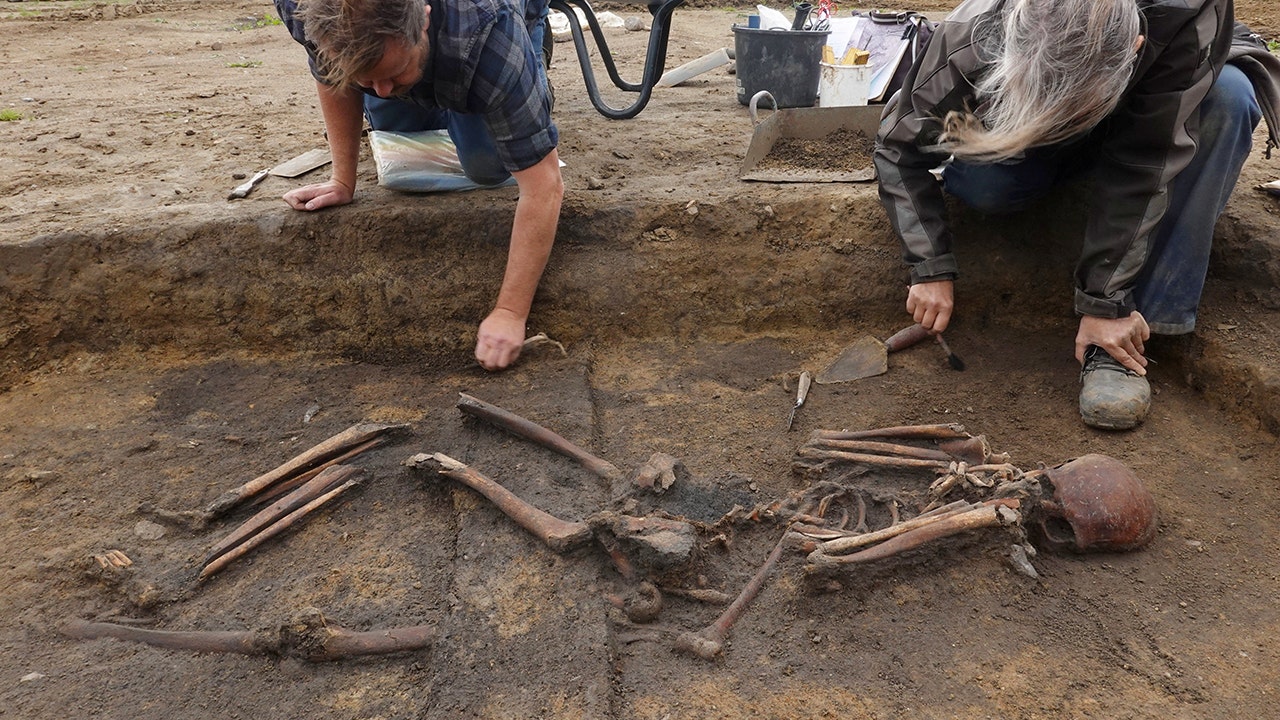Unearthing Viking History: A Remarkable Discovery in Denmark
In a groundbreaking archaeological find, fifty "exceptionally well-preserved" Viking skeletons have been unearthed in the village of Åsum, located west of Copenhagen, Denmark. This significant discovery, made by archaeologists from the Museum Odense, has not only captivated historians but also opened up new avenues for scientific research into the lives of these ancient Norse people.
The Discovery
Over the past six months, the excavation team has meticulously unearthed the remains, which include five cremated graves alongside the skeletons. Michael Borre Lundø, the museum curator, expressed the rarity of such a find, stating, "It is truly unusual to find so many well-preserved skeletons at once, like those discovered in Åsum." The condition of the remains offers extraordinary opportunities for scientific analyses that could shed light on the health, diet, and origins of those buried.
Scientific Potential
The potential for scientific exploration is immense. Sarah Croix, an associate professor from Aarhus University, highlighted the possibility of conducting ancient DNA (aDNA) analyses on most of the skeletons. This could provide insights into the geographical origins of the individuals and whether they belonged to the same families across generations. "It will be incredibly exciting to learn where these people came from," Croix noted.
The preservation of the skeletons is attributed to high water levels and favorable soil conditions, which have prevented decomposition. Lundø remarked on the exceptional state of preservation, stating, "Normally when we excavate Viking graves, we’d be lucky if there were two teeth left in the grave besides the grave goods, but here we have the skeletons fully preserved."
Artifacts and Cultural Insights
The graves revealed a wealth of artifacts, including knives, brooches, glass pearls, and even a wagon. One particularly notable burial involved a woman interred in her wagon, likely accompanied by her finest belongings. Lundø described her grave as containing a beautiful glass bead necklace, an iron key, a knife with a silver-threaded handle, and a small shard of glass that may have served as an amulet. At the foot of the wagon lay a finely decorated wooden chest, the contents of which remain a mystery.
Another grave nearby contained a bronze three-lobed brooch, red glass, an iron knife, and a small piece of rock crystal, which is not native to Denmark and is believed to have been imported from Norway. These findings suggest that the individuals buried in Åsum were part of extensive international trade networks that flourished during the Viking Age.
Community and Status
While the graves of high-status individuals have garnered much attention, the majority of the skeletons belong to a community of farmers. This aspect of the discovery provides a more comprehensive view of Viking society, illustrating the lives of those who may not have been warriors or traders but were integral to the community’s sustenance and culture.
The burial ground spans approximately 2,000 square meters and is believed to date back to the 9th and 10th centuries. The excavation was prompted by plans to renovate an electrical grid, which fortuitously led to this remarkable archaeological exploration.
A Window into the Past
As archaeologists continue to analyze the findings from Åsum, the potential for new discoveries remains vast. The well-preserved skeletons and accompanying artifacts not only enrich our understanding of Viking life but also challenge existing narratives about their culture and societal structures. Each artifact and bone tells a story, connecting us to a time long past and offering a glimpse into the lives of those who once roamed the lands of Denmark.
This discovery is a testament to the enduring legacy of the Vikings and the ongoing quest to uncover the mysteries of our shared human history.
